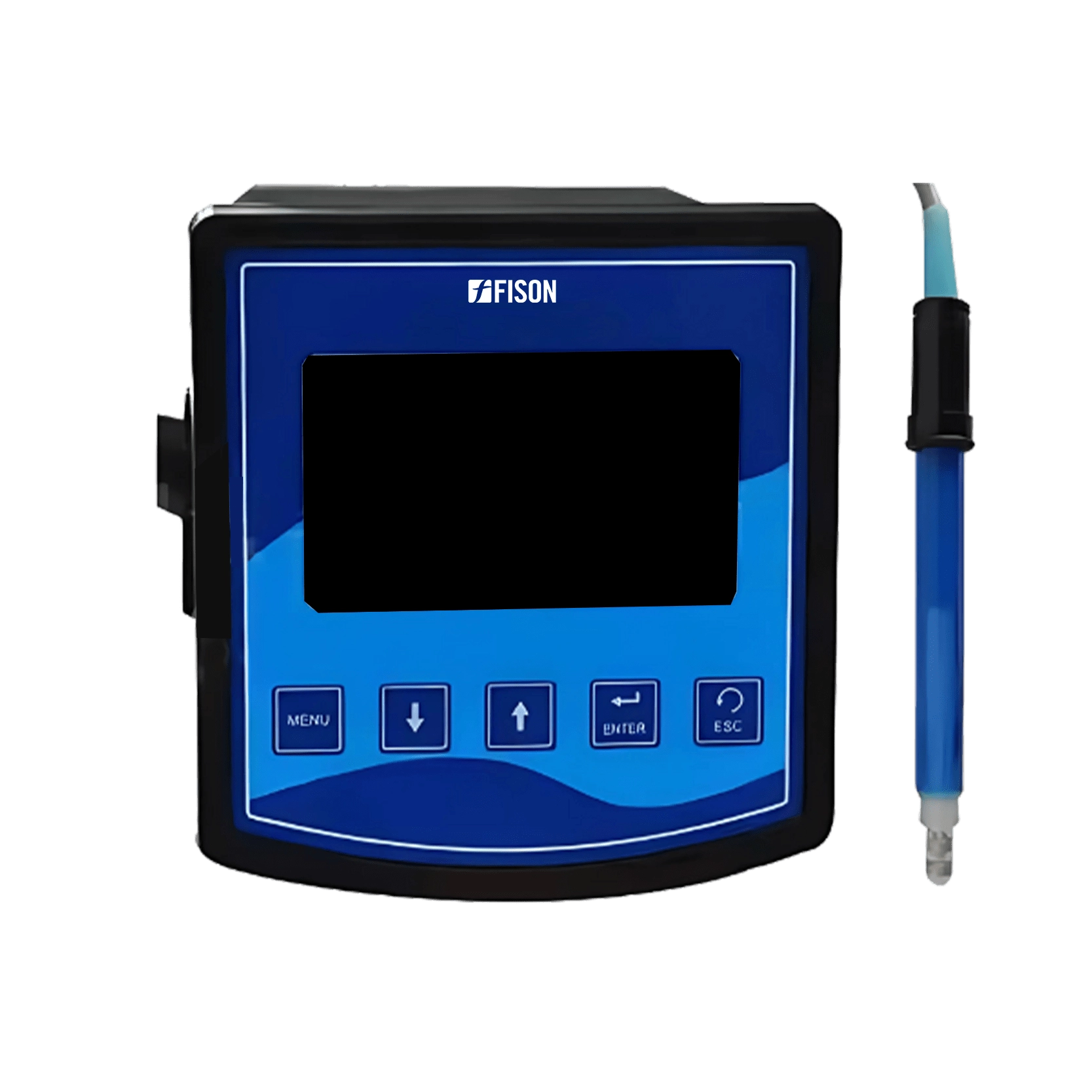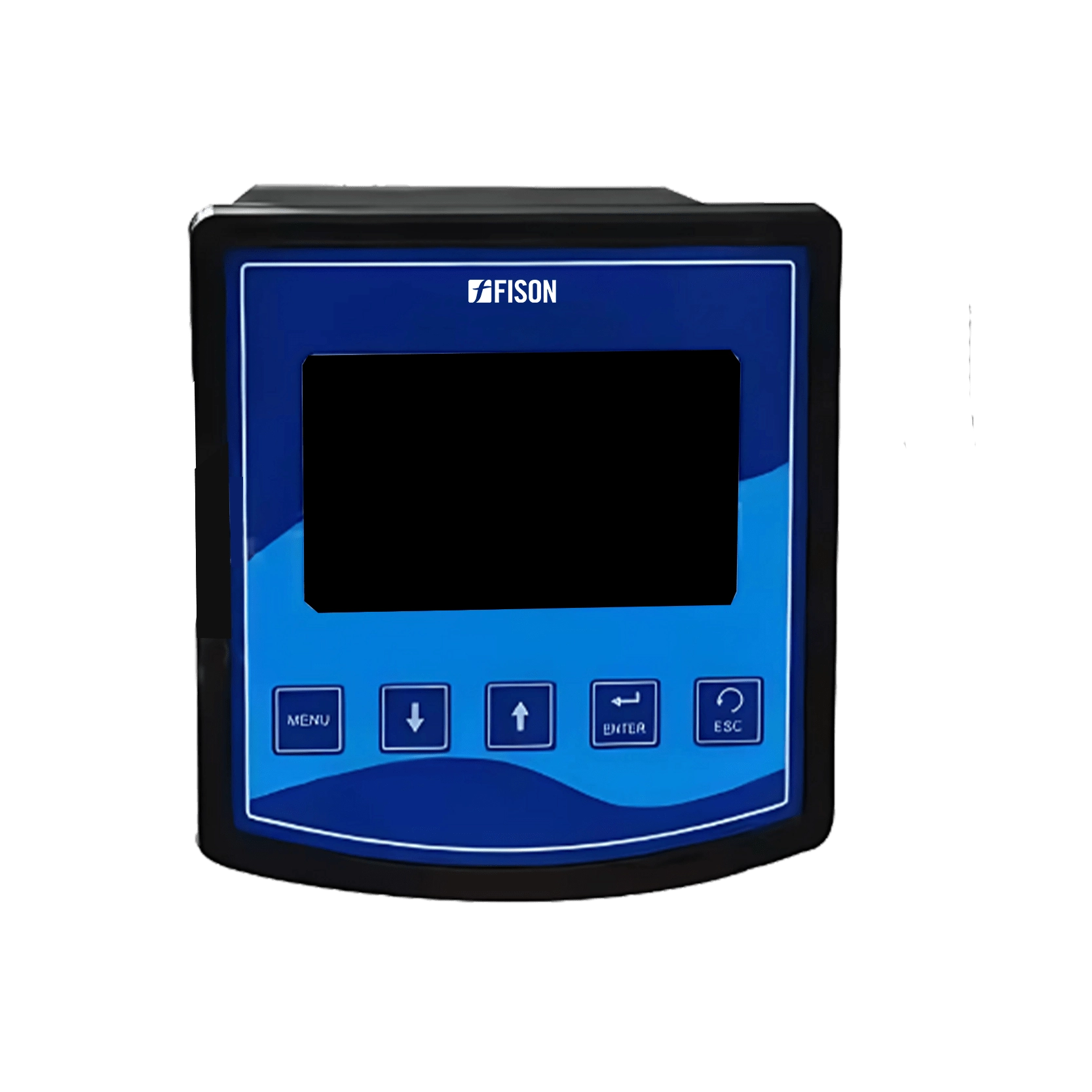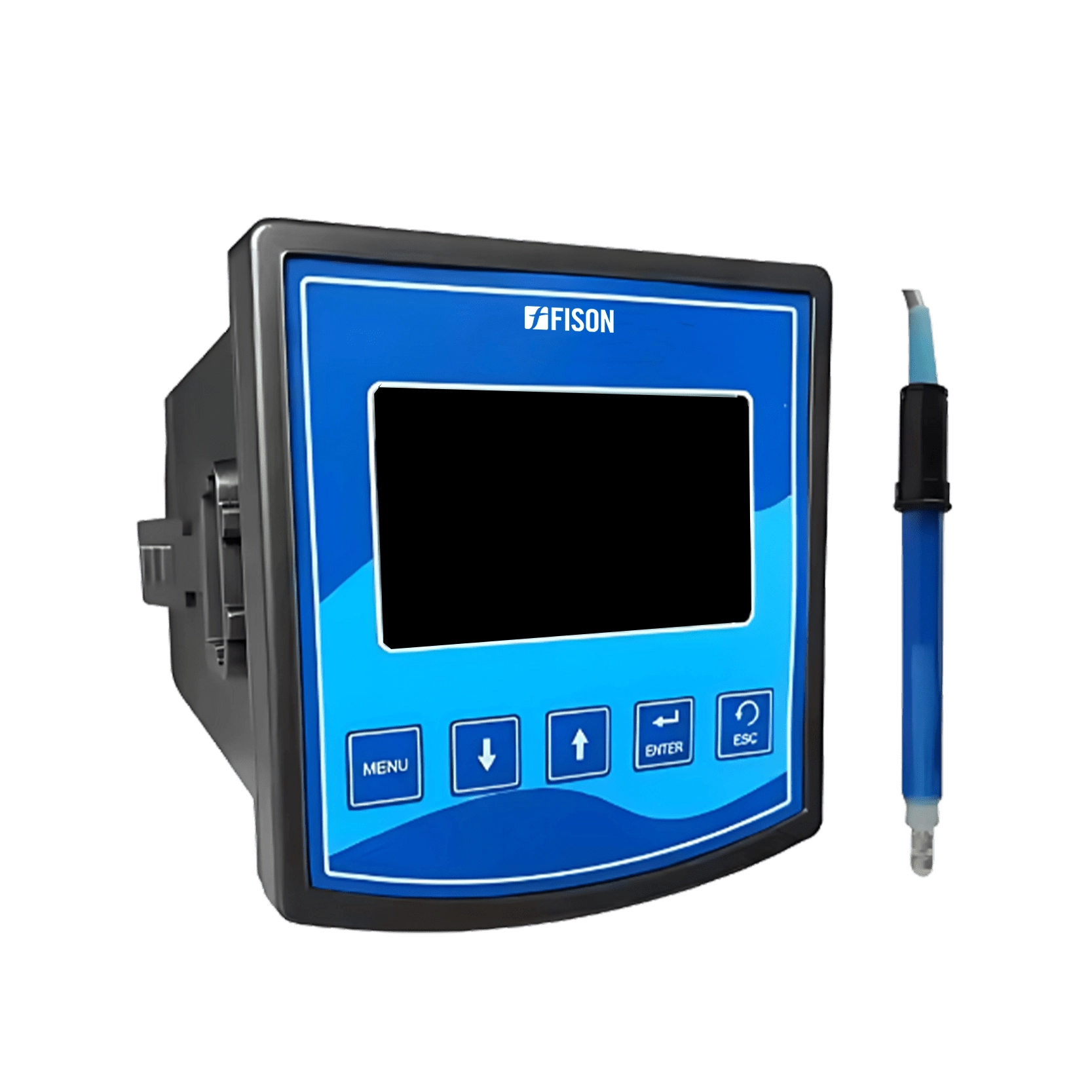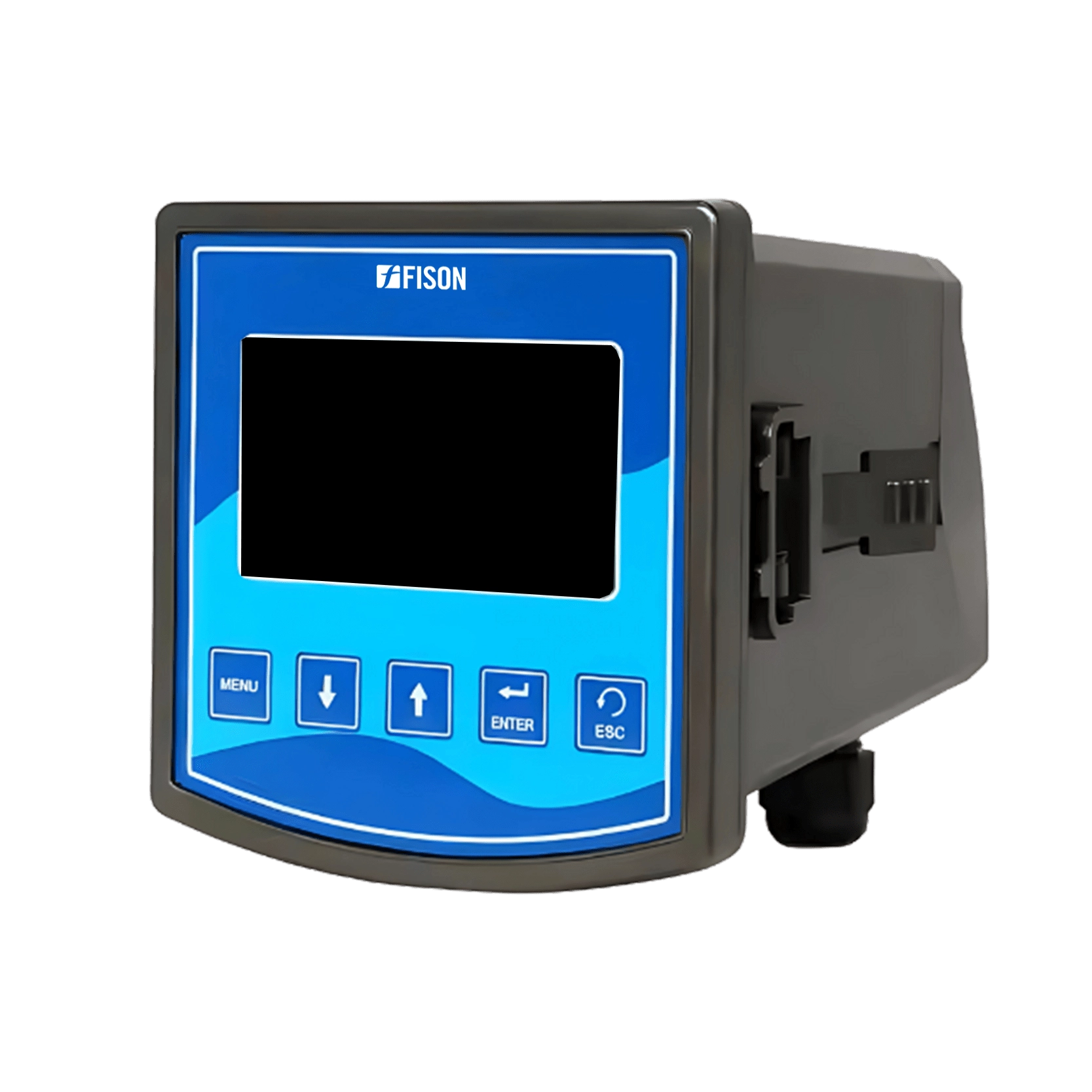



Chlorine Analyzer FM-CHA-A100
Chlorine Analyzer FM-CHA-A100 measures free chlorine and HOCl at 0 to 20.00 mg/L (ppm) and 0-10.00 mg/L (ppm) respectively. It includes automatic and manual pH compensation to maintain measurement accuracy. It operates at a temperature from 0 to 600C enabling steady performance in diverse environments. It also features LCD display that provides clear real-time readings. Our Chlorine Analyzer also offers ON/OFF relay outputs for seamless control and integration, ensuring efficient automation and reliable operation.
Specifications
| Free Chlorine Range | 0-20.00 mg/L(ppm) |
| Free Chlorine Accuracy | ±1% or ±0.01 mg/L |
| Hypochlorous Acid (HOCl) Range | 0 to 10.00 mg/L(ppm) |
| Hypochlorous Acid (HOCl) Accuracy | ±1% or ±0.01 mg/L |
| PH Value Range | 0 to 14pH |
| PH Value Accuracy | ±0.02pH |
| Temperature Range | 0 to 60 ℃ |
| Temperature Accuracy | ±0.5℃ |
| Temperature Compensation | Manual/automatic pH compensation feature(0 to 14) and temperature compensation(0 to 60℃) |
| Electrode | Free chlorine Sensor, PH sensor |
| Display | LCD display |
| Operation Temperature | 0 to 60℃ |
| Current Output | isolation 4 to 20mA, (RS485 optional) |
| Control Output | ON/OFF High limit, low limit relay |
| Working Environment | Ambient Temperature 0 to 50℃, Relative Humidity ≤90% |
| Installation Mode | Panel mounted (embedded) |
| Protection Grade | IP 65 |
| Power Supply | AC 110/220V±10% 50/60Hz, DC 24V, DC 12v |
| Hole Size | 91×91mm |
| Product Dimension (L×B×H) | 96×96×115mm |
| Packaging Dimension (L×B×H) | 40×34×25cm |
| Net Weight | 3.5kg |
| Gross Weight | 4kg |
Features
- High precision sensors
- Compact design
- Temperature compensation
- IP 65 protection grade
Applications
- Our Chlorine Analyzer can be widely used in drinking water, bottling water, electricity, medicine, chemical, food, pulp and paper, swimming pool, water treatment industries.
Accessories
Chlorine sensor – 1 Pc
PH sensor – 1 Pc
Flow cell (probe holder) – 1 Pc
Frequently Asked Question
1: What parameters does the FM-CHA-A100 measure?
It measures free chlorine (0–20.00 mg/L) and hypochlorous acid (HOCl) (0–10.00 mg/L) concentrations. It also measures pH levels (0–14 pH).
2: Does the analyzer support temperature and pH compensation?
Yes, it supports automatic and manual pH compensation as well as temperature compensation to maintain measurement accuracy.
3: What industries can this analyzer be used in?
It is ideal for drinking water, bottled water, electricity, medicine, chemical, food, pulp & paper, swimming pools, and water treatment applications.
4: How often should I perform maintenance on the analyzer?
Regular maintenance ensures optimal performance. Clean the sensors periodically to prevent fouling. Regularly check and calibrate the analyzer to maintain measurement accuracy.
5: What should I do if the analyzer displays erratic readings?
Erratic readings can result from sensor fouling, air bubbles or inconsistent flow rates. Clean the sensors, check for air bubbles, and ensure a consistent flow rate. If issues persist, recalibrate the analyzer and consult the troubleshooting section of the user manual.
6: What is the expected lifespan of the Chlorine Analyzers sensors?
The lifespan of the sensors depends on usage and water quality. With proper maintenance and regular calibration, the sensors can provide reliable measurements for an extended period. Refer to the user manual for specific guidelines on sensor replacement intervals.
7: What are some best practices to ensure accurate measurements?
To ensure accurate measurements; regularly clean the sensors to prevent fouling, calibrate the analyzer periodically using standard solutions, ensure consistent sample flow rates, avoid exposure to extreme temperatures and direct sunlight.